#yellow peril supports black power
Explore tagged Tumblr posts
Note
hey. is your blog title a battle tapes reference. valkyrie specifically .
You're thinking of Belgrade! But yes, it's the only song I've heard from them but I like it a lot. It's partly for the Goth Park video and partly because I put such a focus on solidarity and allyship, both what I receive and what I can give. I just truly believe in the beauty of living and dying for others, especially when they'd do the same for you.
#okay THIS sounds like an Actually NPD post#I swear I'm not trying to self-aggrandize allyship of all kinds from every direction is literally just a special interest of mine#I feel the same way about protest signs that say “Yellow Peril Supports Black Power” it doesn't have to involve me at all#and it's why I stress appreciating non-queer and non-cis allies so much
1 note
·
View note
Text

working on pride art in advance and having way too much fun futzing around with outfit colors. ft. the new aperiodic regular tile
#void talks#my art#I miiiiiiiiight fic karyn's elbow but I think it only looks weird bc I drew the indent where it shouldn't be#fix*#I didn't draw them kissing last year and that was criminal I think#obviously the front of their shirts aren't visible but in my mind they read (respectively):#lavender power / yellow peril#inspired eternally by a sticker a classmate has that read YELLOW PERIL SUPPORTS BLACK POWER that lives rent free in my head
1 note
·
View note
Note
In Qin Opera (秦腔), one motif that often turns up in operas telling mythical or legendary is immortals "releasing their taboos"/"破戒" when they seek to work destructive magic. The immortal or sage will indulge in meat and concentrated wine, as opposed to the vegetarian diet they consumed before, and then engage in forbidden arts. Lu Ya does it in the opera adaptation of FSYY, when he curses Zhao Gongming with his seven arrows. Zhao Gongming's three sisters do it too when they summon their Yellow River Formation. (representing "nine twists" of the large intestine, but also used as a euphemism for uterus, as seen in the ten gods of Nuwa's Guts/女娲之肠 in the Shanhaijing) In another adaptation of a legend, Sun Wu does it to scourge some ghost women haunting him. Is there any Daoist religious or folk belief basis for this motif from the operas?
Very interesting!
In Daoist canons, you can't really find much support for such a thing——when priests are about to work powerful magic, they'd be doing the opposite: keeping a vegetarian diet and maintain purity in body and mind.
However, if I were to haphazard a guess? It probably has sth to do with the folk magic belief of "pollution" (meat, wine, pungent vegetables) and "dirty stuff" having a sort of power all to themselves, as well as being able to neutralize spells and the powers of supernatural beings.
You see this in the novel proper, where black chicken + dog blood and buckets of excrements are employed by Jiang Ziya against the peachwood and willow spirits, Gao Ming and Gao Jue, to "subdue their demonic aura" (Chapter 90).
Gao Lanying also tried and failed to use the same mixture against Yang Jian to neutralize his transformation arts, and was tricked into killing Zhang Kui's aging mother instead (Chapter 86).
The second thing I can think of is that, in FSYY novel, the 12 immortals of the Chan sect are joining the war because it is part of their "Peril", the consequences for failing to sever the Three Corpses and violating prohibitions.
And when they were about to kill people, they'd often voice that first: "this disciple is going to break his prohibition against killing today" et cetera.
Which...isn't as relevant, but might have been an inspiration for the overt on-stage performance of taboo-breaking.
As always, I cannot speak on the opera part, but from a folk magic perspective? My speculation is:
the immortals breaking their prohibitions against taboos in adaptations seems like an intentional subversion of the regular Daoist rituals of purification, where the dangerous and harmful effects produced by the "taboo" substance is channeled away from the caster and towards some other target.
18 notes
·
View notes
Text
A shy penguin wins New Zealand’s bird election after campaign filled with memes and tattoos
By CHARLOTTE GRAHAM-McLAY; Updated 11:33 PM EDT, September 15, 2024
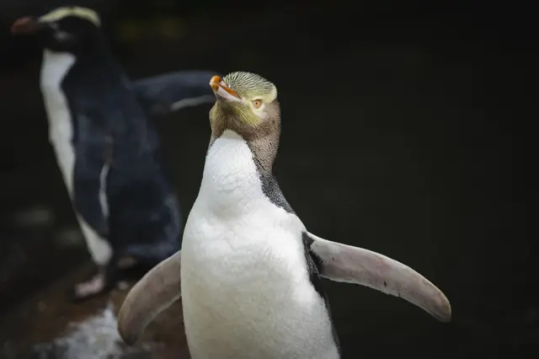

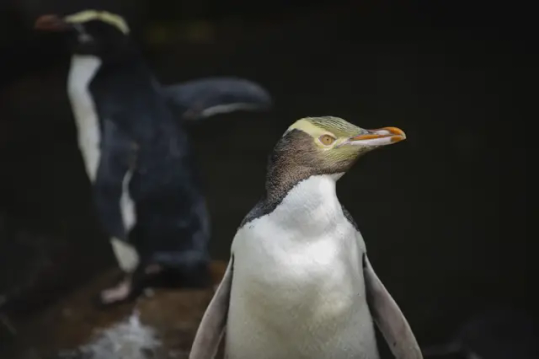
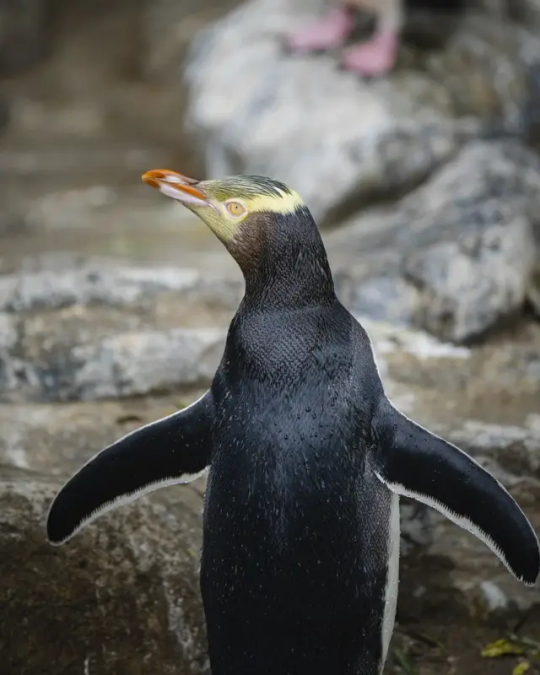
A hoiho or yellow-eyed penguin pictured on April 2, 2023, has won New Zealand's annual Bird of the Year vote, Monday, Sept. 16, 2024, after a fierce contest absent the foreign interference and controversies that have upset the country's avian elections before. (Hayden Parsons via AP)
WELLINGTON, New Zealand (AP) — It’s noisy, smelly, shy — and New Zealand’s bird of the year.
The hoiho, or yellow-eyed penguin, won the country’s fiercely fought avian election on Monday, offering hope to supporters of the endangered bird that recognition from its victory might prompt a revival of the species.
It followed a campaign for the annual Bird of the Year vote that was absent the foreign interference scandals and cheating controversies of past polls. Instead, campaigners in the long-running contest sought votes in the usual ways — launching meme wars, seeking celebrity endorsements and even getting tattoos to prove their loyalty.
More than 50,000 people voted in the poll, 300,000 fewer than last year, when British late night host John Oliver drove a humorous campaign for the pūteketeke -- a “deeply weird bird” which eats and vomits its own feathers – securing a landslide win.

A man rides past a mural celebrating John Oliver's New Zealand's 2023 Bird of the Year campaign in Wellington, New Zealand, Sunday, Sept. 15, 2024. (AP Photo/ Charlotte GrahamMcLay)
This year, the number of votes cast represented 10% of the population of New Zealand — a country where nature is never far away and where a love of native birds is instilled in citizens from childhood.
“Birds are our heart and soul,” said Emma Rawson, who campaigned for the fourth-placed ruru, a small brown owl with a melancholic call. New Zealand’s only native mammals are bats and marine species, putting the spotlight on its birds, which are beloved — and often rare.
This year’s victor, the hoiho — its name means “noise shouter” in the Māori language — is a shy bird thought to be the world’s rarest penguin. Only found on New Zealand’s South and Chatham islands — and on subantarctic islands south of the country — numbers have dropped perilously by 78% in the past 15 years.
“This spotlight couldn’t have come at a better time. This iconic penguin is disappearing from mainland Aotearoa before our eyes,” Nicola Toki, chief executive of Forest & Bird — the organization that runs the poll — said in a press release, using the Māori name for New Zealand. Despite intensive conservation efforts on land, she said, the birds drown in nets and sea and can’t find enough food.
“The campaign has raised awareness, but what we really hope is that it brings tangible support,” said Charlie Buchan, campaign manager for the hoiho. But while the bird is struggling, it attracted a star billing in the poll: celebrity endorsements flew in from English zoologist Jane Goodall, host of the Amazing Race Phil Keoghan, and two former New Zealand prime ministers.
Aspiring bird campaign managers — this year ranging from power companies to high school students — submit applications to Forest & Bird for the posts. The hoiho bid was run by a collective of wildlife groups, a museum, a brewery and a rugby team in the city of Dunedin, where the bird is found on mainland New Zealand, making it the highest-powered campaign of the 2024 vote.
“I do feel like we were the scrappy underdog,” said Emily Bull, a spokesperson for the runner-up campaign, for the karure — a small, “goth” black robin only found on New Zealand’s Chatham Island.
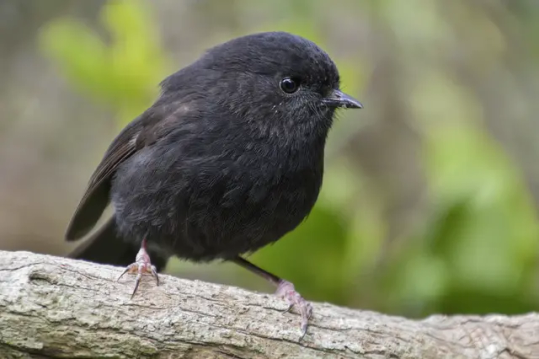
A karure, or Chatham lslands black robin pictured on Chatham Island in Sept. 2016 is runner-up to a hoiho or yellow-eyed penguin in the New Zealand Bird of the Year competition, announced Monday, Sept. 16, 2024. (0scar Thomas via AP)
The karure’s bid was directed by the students’ association at Victoria University of Wellington, prompting a fierce skirmish on the college campus when the student magazine staged an opposing campaign for the kororā, or little blue penguin.
The rivalry provoked a meme war and students in bird costumes. Several people got tattoos. When the magazine’s campaign secured endorsements of the city council and local zoo, Bull despaired for the black robin’s bid.
But the karure — which has performed a real-life comeback since the 1980s, with conservation efforts increasing the species from five birds to 250 — took second place overall.
This weekend as Rawson wrapped up her campaign for the ruru, she took her efforts directly to the people, courting votes at a local dog park. The veteran campaign manager who has directed the bids for other birds in past years was rewarded by the ruru placing fourth in the poll, her best ever result.
“I have not been in human political campaigning before,” said Rawson, who is drawn to the competition because of the funds and awareness it generates. The campaign struck a more sedate tone this year, she added.
“There’s been no international interference, even though that was actually a lot of fun,” she said, referring to Oliver’s high-profile campaign.
It was not the only controversy the election has seen. While anyone in the world can vote, Forest & Bird now requires electors to verify their ballots after foreign interference plagued the contest before. In 2018, Australian pranksters cast hundreds of fraudulent votes in favor of the shag.
The following year, Forest & Bird was forced to clarify that a flurry of votes from Russia appeared to be from legitimate bird-lovers.
While campaigns are fiercely competitive, managers described tactics more akin to pro wrestling — in which fights are scripted — than divisive political contests.
“Sometimes people want to make posts that are kind of like beefy with you and they’ll always message you and be like, hey, is it okay if I post this?” Bull said. “There is a really sweet community. It’s really wholesome.”
3 notes
·
View notes
Text

̟ ᘎ The Afterglow - prologue ⊹
ᰋ. Sonic Future Au : fan kids ᰍ
+ The colossal Ark, battered but intact, hung in the inky blackness of space. Shadow, his power spent, began to visibly weaken. The aura of his Super form, a shimmering, bright energy that had moments before crackled with immense power, flickered and dimmed, like a dying flame. His usually sharp features softened, his body trembling with exhaustion. The intense energy that had fueled his transformation was rapidly ebbing away, leaving him vulnerable and weak.
Sonic, still reeling from the battle’s intensity, watched with growing alarm. His own Super form, a vibrant gold energy, was also beginning to dissipate, the power draining away as quickly as Shadow's. He saw Shadow’s form begin to slump, the fading crimson light unable to support his weight any longer. Gravity, relentless and unforgiving, began to pull the weakened hedgehog towards the distant, swirling blue marble of Earth.
A choked cry escaped Sonic's lips as he saw Shadow start his perilous descent. "Shadow!" he roared, his voice echoing in the vacuum of space. Without hesitation, Sonic launched himself after his rival, his own fading super form providing a burst of speed that pushed him to his absolute limits. The gold energy surrounding him thinned and fragmented, mirroring the yellow hue fading from Shadow. He was rapidly losing his enhanced abilities, but the urgency of the situation spurred him on.
With a desperate surge of adrenaline-fueled speed, Sonic closed the distance. He reached Shadow just as the hedgehog began to plummet uncontrollably. With a powerful grip, Sonic caught Shadow, pulling him close, his own body straining under the combined weight of their exhaustion. As their bodies touched, a blinding light erupted from the space between them, a radiant energy expanding outwards. This blinding light coalesced into a protective shield, a shimmering, pearly white sphere encompassing both hedgehogs. The shield pulsed with energy, radiating a magnificent, shooting star-like effect as it streaked across the vast expanse of space, carrying the two exhausted heroes towards the Earth. The intense light and the speed of their descent created a breathtaking spectacle, a testament to the bond formed amidst their epic battle.
5 notes
·
View notes
Note
Hiii I love your content!! I really love your stuff! Can you please write a muichiro x kuri fanfic?? And this is what kuri looks like btw, she’s a girl-

Thank you!
Heres some of her characteristics!-
brown hair that fades to black, gold strings of hair, boyish looked cut hair,lavender haori with forest patterns, a hashira uniform that was very revealing, her belly was shown and her skirt was tight and short, blue katana, short hair, gold yellow colored eyes, soft skin, short purple socks with forest details, and some green and purple zori sandals.
And if you can draw her, here’s her palette!-

LOVE AT FIRST SIGHT
Muichiro x Kuri (oc x canon)



In a world plagued by demons, there were two powerful hashiras named Kuri and Muichiro. Kuri was a fearless demon slayer with a boyish haircut, her brown hair fading to black with golden tips, accentuating her striking gold-yellow eyes. Muichiro, on the other hand, possessed long black hair with mint tips and captivating aquamarine blue eyes, giving him an ethereal appearance. Muichiro's delicate features often led others to mistake him for a woman, but his skills and determination as a demon slayer were unmatched. One fateful day, Kuri and Muichiro found themselves crossing paths during a mission to eliminate one normal rank demon that looked powerful. As their eyes met for the first time, an invisible spark ignited between them, heralding the beginning of a remarkable love story. They fought side by side, seamlessly synchronizing their movements and protecting each other from perilous attacks. Kuri marveled at Muichiro's grace and strength, his fighting style unlike any she had ever witnessed. She was captivated not only by his skill but by the sincerity in his eyes as well. As they banished the demon together, the adrenaline of battle gave way to a profound connection. Kuri couldn't help but admire Muichiro's unwavering determination, his gentle personality shining through his stoic facade. Muichiro, in turn, was drawn to Kuri's unwavering courage and fierce dedication to her duty as a Hashira. Days turned into weeks, and their bond deepened with every interaction. They shared training sessions, moments of vulnerability, and late-night conversations under the starry sky. Kuri found herself falling deeper for Muichiro, his presence bringing a sense of calmness to her chaotic life. Muichiro, too, discovered a love blossoming within him, a love that surpassed the boundaries of their shared demon-slaying duties.
In the midst of their blossoming love, Kuri and Muichiro faced countless trials together. They battled cunning demons and overcame unimaginable odds, knowing that their profound connection would help them conquer any obstacle. Their shared strength and unwavering support became the foundation of their love, propelling them forward in their mission to bring peace to their world. As time passed, Kuri and Muichiro became inseparable, each falling deeply in love with the other. Their love was forged in the fires of battle, nurtured by compassion and understanding. Together, they discovered that love could thrive even amidst chaos, uniting their hearts and empowering their respective roles as demon slayers. In the end, it was their love that allowed Kuri and Muichiro to become even stronger. They fought side by side, their bond fueling the flames of their determination. With each strike, they knew they were protecting not only their world but the love they had found in each other. And so, Kuri and Muichiro, two demon slayers harboring a love ignited at first sight, became legendary. Their story served as a beacon of hope for others, a reminder that love and courage could conquer even the darkest of forces. And as they fought alongside one another, their love illuminated the path to a brighter future, where demons were vanquished and love reigned supreme.
THANK YOU @muichiroslovermwah FOR THE IDEA AND THE DRAWING REQUEST!! ✧⁺⸜(●˙▾˙●)⸝⁺✧
tbh this is the first time i made an oc x canon story. i hope you like the drawing of kuri i made. i tried my best to make it accurate based on the description and color palette you gave me.
7 notes
·
View notes
Text
book recs
all it took was one look by T.lanay
summary: aiden is your average seventeen-year-old senior with crazy best friends and a supportive family... unless you count the fact that hes got a big secret to tell. aiden is what most people would call a "closet gay", something he believes he cant let his school know and the secrets dont stop there. aiden goes through high school the best way he knowns how - being invisible. but his perfect survival plan comes to a screeching halt when his cousin, the big bad bully himself, gets dropped off at his home to stay for a few months. in a drop of a hat, aiden finds himself falling straight down the rabbit hole he once managed to escape from and the only person that can help is liam moore, the star quarterback, the most popular and definitely the straightest guy in school. there is on way! but what aiden doesnt know is that liam has his own share of secrets. hes trying his best to fight it, but his eyes that glow bright yellow in the most incoveniet of times betray him. the full moon is fast approaching, and the pull gets stronger and stronger. how long will liam and aiden last? is the big bad soon to be alpha wolf corrupting poor innocent little sheep? will aiden finally learn to stand up for himself?
in the forests of the night by amelia atwater-rhodes
summary: by the day, risika sleeps in a shaded room in concord, Massachusetts. by night, she hunts the streets of new york city. she is used to being alone. but someone is following risika. he has left her a black rose, the same sort of rose that sealed her fate three hundred years ago. three hundred years ago risika had a family- a brother and a father who loved her. three hundred years ago she was human. now she is a vampire, a powerful one. and her past has come back to torment her
first creation by mars adler
summary: in an alternate biblical history, the war between angels and demons in unending and brutal. amitel, an angel of god, and stolas, a fallen angel turned spy should enemies. however. after they uncover a shocking secret that drives them to desert, they go on the run together in modern-day america. both are injured and its only by chance that they stumble upon a long abandoned church. ensconced in the alluring, stifling church with a forgotten cemetery and too many peach trees, they finally have time to heal. they also have time to think and plan, which is as much a blessing as it is a curse. amitiel must come to terms with his strange hunger and forbidden desires, while stolas plans their next move. they both grapple with knowledge of where their food rations came from, and that something is very wrong in the heart of heaven itself. god has vanished, and if he isnt giving the orders, who is condoning the atrocities the angels commit in the name of winning?
pitch black by frank lauria
summary: a rogue comet spears an earth-bound commercial spacecraft, forcing it to plummet to the surface of an unknown planet. with the captain dead, a brave pilot performs a perilous crash landing. other than three suns- which create perpetual light- and a slight oxygen deficiency, a search party discovers that the planet isnt much different from earth... until they stumble across a ghostly settlement littered with the human remains of geologists who mysteriously perished exactly sixty years ago. and the most horrific discovery of all: below the surface of the soil. where darkness reigns, live hungry predators with a deadly appetite. once every sixty years a solar eclipse darkens the skies and allows the blood-hungry creatures to escape from their underground tomb. with only hours before total blackout, everyone must unite in a race to raise the geologists' abandoned ship before becoming a long awaited meal
demon in my view by amelia atwater- rhodes
summary: jessica isnt your average teenager. though nobody at high school knows it, shes a published author. jessica often wishes she felt as comfortable with her classmates as she does among the vampires and witches of her fiction. but two new students have just arrived at ramsa high, and both want jessicas attention. she has no patience with overly friendly caryn, but shes instantly drawn to handsome alex, a self-assured, mysterious boy wo seems surprisingly familiar. if jessica didnt know better, she'd think aubrey, the alluring villain from her novel, had just sprung to life. thats impossible, but course; aubrey is a figment of her imagination. or is he?
chronicles of riddick by alan dean foster
summary: riddick has spent the last five years on the move among the forgotten worlds on the outskirts of the galaxy, eluding mercenaries bent on collecting the price on his head. now, the fugitive finds himself on planet helion, home to a progressive multicultural society that has been invaded by the lord marshal, a despot who targets humans for subjugation with his army of warriors known as necromongers. in the ensuing chaos, riddick is captured by toombs, a tenacious mercenary, and taken to a subterranean prison on planet crematoria where extremes of temperature range from arctic nights to volcanic days. here riddick encounters kyra, a survivor from an earlier chapter in his life. his efforts to free himself and kyra lead him to the necromonger command ship, where he is pitted against the lord marshal in an apocalyptic battle with possibly the fate of all beings - both living and dead - hanging in the balance
0 notes
Text

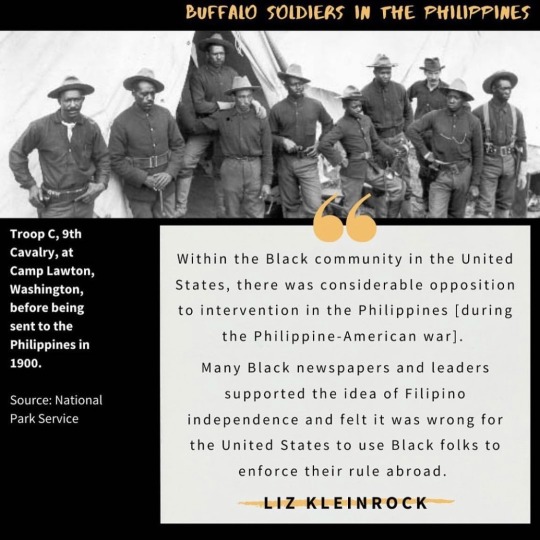



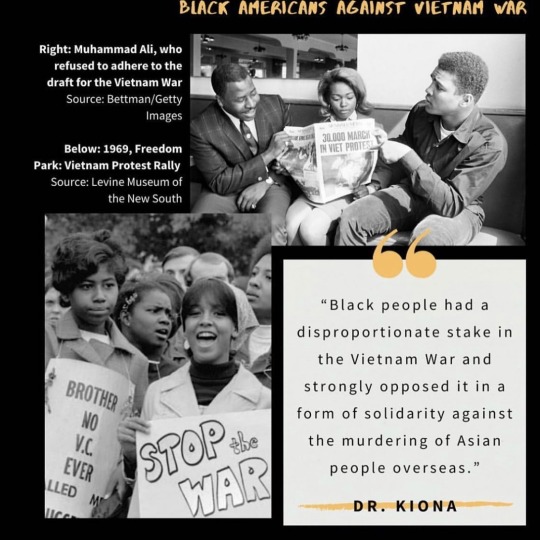

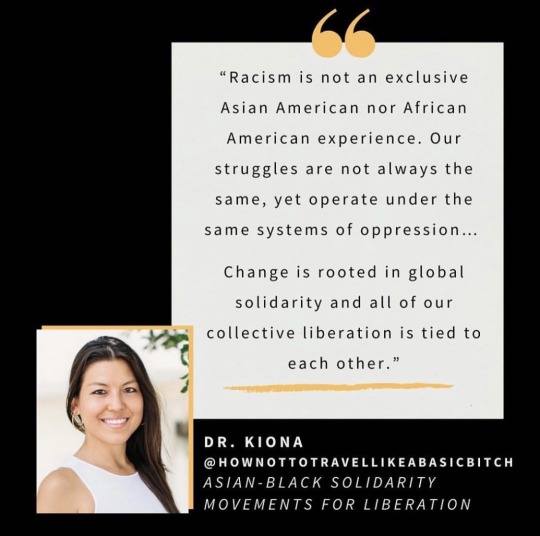
youtube
#BIPOC solidarity#yellow peril supports black power#american history#usa history#black lives matter#blm#stop asian hate#stop aapi hate#protect asian lives#black panthers#civil rights#Philippine American War#Vietnam War#black-asian solidarity#asian-black solidarity
407 notes
·
View notes
Text
Hasan Minhaj has some stuff to say to the Asian American Community






















https://youtu.be/i_FE78X-qdY
#hasan minhaj#asian american#asian america#black lives matter#asian black solidarity#patriot act#yellow peril supports black power
306 notes
·
View notes
Text

———
As an Asian American living in this now very corrupt and chaotic country, I spent a majority of this weekend crying in frustration and anger as to what happened. It’s not a surprise, it was a ticking bomb that has revealed, even more transparently, to the world, what type of leadership and government we have. As a PoC this shit sucks, and seeing how Black lives are being completely disregarded by police brutality and white supremacy — it could have easily been an Asian man, or Latino man. It could have been any man but a white man and that makes me angry.
Asian Americans have not had many opportunities to speak out to our oppression, oftentimes it’s unspoken and more implicit. But Black American have always stood their ground and fought with loud voices for basic humanitarian rights, their struggle has always been at the forefront of American history. And as an Asian American I admire that, I support that, for we are all against the same evil: white supremacy and their refusal acknowledge minority groups as...well, equals.
We have different struggles, but it does not change the fact that we must fight against inequality and injustice.
Thus, I as an Asian American, scream from the top of my lungs, as loud as I can against my own “Asian women are meek and obedient” stereotypes, that YELLOW PERIL SUPPORTS BLACK POWER.
———
PLEASE CONSIDER DONATING TO GET JUSTICE FOR GEORGE FLOYD (An article with a list of links based on your state to help support protestors against police brutality) / BAIL FUNDS FOR PROTESTORS / PETITIONING TO DEFUND THE POLICE /
There are also a LOT of YouTube Videos out there that are donating their ad revenues to the cause and you can support through them if you do not have the means! Please! Now is NOT the time to stay quiet. Now is NOT the time to be passive. We see injustice and we MUST FIGHT!!!!
#black lives matter#black lives fucking matter#blm#blm resources#justice for george floyd#yellow peril supports black power#peachbabypie draws#no words can quantify the anger and disgust i feel towards the american government and leadership for allowing such disgusting behavior#no justice no peace#defund the police#anti police brutality
119 notes
·
View notes
Photo

𝚈𝚎𝚕𝚕𝚘𝚠 𝙿𝚎𝚛𝚒𝚕 𝚜𝚞𝚙𝚙𝚘𝚛𝚝𝚜 𝙱𝚕𝚊𝚌𝚔 𝙿𝚘𝚠𝚎𝚛⠀
⠀
---⠀
⠀
I don't have the eloquence to properly convey the importance of what we're doing now - speaking up, protesting, petitioning, donating, educating. Real change is taking place because we are speaking up. All four officers involved in George Floyd's murder are now facing charges, with the officer who killed him now facing second degree murder charges. Minneapolis has banned chokeholds by police and requires officers to report and intervene against unauthorized use of force by another officer. Serious conversations are being had for much needed police reform. Don't stop fighting for justice. Sometimes it's hard to imagine how your voice can make a difference. It can. There is proof.⠀
⠀
For any of you who are financially able to make a donation or have made one in support of the Black Lives Matter movement, DM me with a screenshot of the receipt and I'll draw you a sketch of your choice.
24 notes
·
View notes
Photo
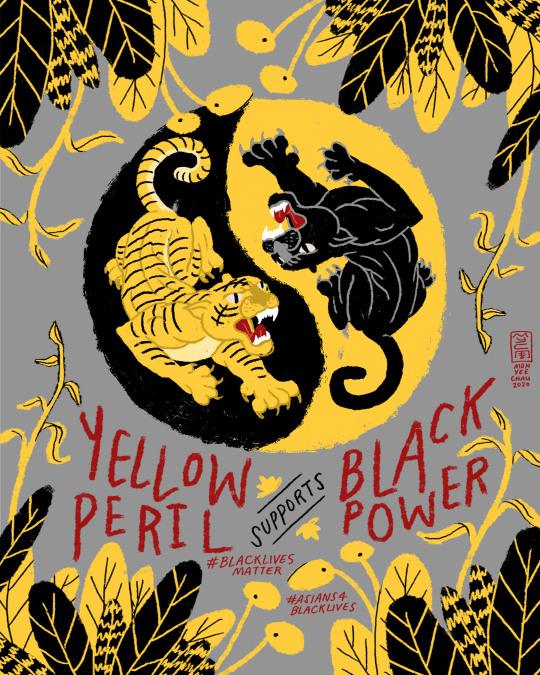
As APAHM comes to a close I think it is important for all of us Asian-Americans to stand with the black community, to address anti-blackness with our friends and families and the ways we can use our (albeit small) privilege to help those most disenfranchised. All lives can’t matter until Black lives matter
Art by Monyee Chau (https://www.instagram.com/monyeeart/) https://www.chinesebornamerican.com/yellowperil-supports-blackpower/
33 notes
·
View notes
Text


Stand together. ✊🏻✊🏼✊🏽✊🏾✊🏿
#black lives matter#yellow peril supports black power#husky's art#if it makes me a fucking SJW for being angry on what's going on THEN I AM THE PERSON I HATE#blm
16 notes
·
View notes
Text

A lot has happened lately. I sort of forgot I had started posted again on tumblr. Anyway, this is the only thing I’ve done in the last week+. My home is the state that murdered George Floyd. I’m trying to help in the ways that I can.
BLACK LIVES MATTER
#illustration#digital illustration#digital art#yellow peril supports black power#asians for black lives#asians 4 black lives#black lives matter#blm
12 notes
·
View notes
Text
How to help bail out BLM protesters when you live in the Philippines (and probably other countries)
Avoid large fees or get around accounts’ international transfer restrictions by donating with cryptocurrency to The Bail Project.
1. Set up account on cryptowallet service. Example: coins.ph (also has mobile app). You will need to verify your account with a phone #, government ID photos, and selfie of you holding the ID. A warning that creating an etherium wallet with them comes with a small fee of 80 PHP, but it seems their Bitcoin, Bitcoin Cash and Ripple wallets don’t cost anything. I just use the Bitcoin wallet.
2. Transfer money into wallet through bank transfer (Metrobank, Landbank, Eastwest, PNB, etc.), over-the-counter at Union Bank, remittance centers (Palawan, M Lhullier, Tambunting), touchpay/posible kiosks, and other E-wallets (PayMaya, GCash). Instructions available in-app. You will need to verify you account first through ID and photo to access bank transfer, but I don’t think you need to verify for kiosk and remittance cash-in.
3.Convert cash to cryptocurrency.
4. Send to The Bail Project. Scan the QR Code (all available coins.ph currencies) or copy-paste the Bitcoin wallet address.
5. Choose amount, and send.
7 notes
·
View notes
Text


Oakland today showing my support in the best way I can. Please go out and do what you can to help! Protest, donate, sign petitions! https://blacklivesmatters.carrd.co
7 notes
·
View notes